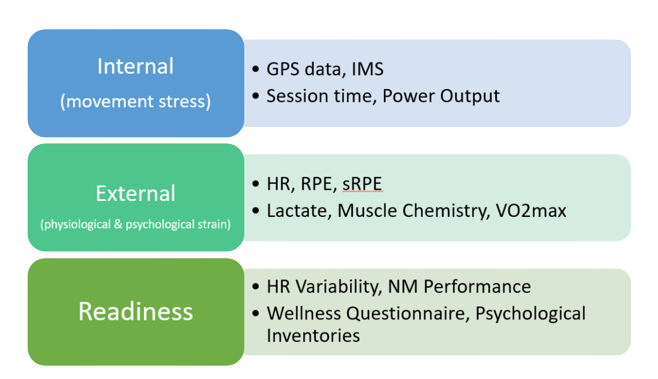Defining Workload… The Engineering Way

Introduction
The competitive season in many professional sports is long, spanning many months. For example, in Euroleague, the season starts in the middle of September and ends by the middle of June. Furthermore, teams play two to three high intensity games per week, competing both in the European and the domestic league, plus the interim practices. Taking, finally, into account the frequent travelling that hinders the athletes’ sufficient recovering and resting, it gets apparent that professional athletes suffer an aggregated body “load”.Although their bodies are thought to be the “ultimate machines”, this increased load and the short – intermittent – recovery time, cause frequent injuries. Let us examine the case of the English Premier League. During season 2016/17, clubs had an average of 1410 player-days out due to injury! Obviously, this translates to an enormous financial burden. According to recent findings, £900 million are lost per season due to injury-related under-performance [1]. The picture becomes even bleaker, considering that the clubs’ wage cost surpassed £3 billion and the wages/revenue ratio reached 61% in 2018/19 season. Although there is increased research focused on injury prevention, a high rate of injuries still plagues sports. Any intervention aimed to reduce the chance of injury must be individualized and tailored to each athlete. There are individual characteristics in tissue resilience, muscle architecture, biomechanics and physiology that render generic injury reduction strategies ineffective. But first, let’s explore soft tissue injury from a mechanics point of view.Engineering 101
The human myoskeletal system has the remarkable ability to adapt to force. When the imposed force exceeds the tissue’s resilience, injury occurs. To understand how a healthy muscle gets injured, it is fundamental to understand its response to stress and strain.From a mechanics point of view, understanding soft tissue injury lies in the understanding of the concept of Load.

√ Tensile
√ Compressive
√ Shear
√ Torsion
√ Bending

The analysis of each type of load is beyond the scope of this post. What is that
human muscle units (fibers) do receive all those kinds of loads. Specifically,
muscles receive mostly loads according to their construction (structure) and the
“preferable” axis. Therefore, it is rational to examine them from the engineer’s
perspective.
In Bioengineering science, a material’s load refers to the entire collection of forces and moments which act on it. So, we can calculate cumulative force to a surface or an element, measured either in Newton or (Newton * meters). These forces will
cause stress and strain on a
Stress is defined as force per area unit, which causes the material to change
shape. Principal stresses are responsible for volume changes. Shear stresses are
responsible for angular changes. Strain is the measure of the material’s
deformation, as a result of the received stress. It is expressed as the extension
ratio of the body, surface or element, respectively.
Bioengineering Reflection
A human muscle unit constitutes a specific “material”, which is loaded during exercise. The accumulated applied forces produce the respective stress, which in turn causes muscle (material) deformation. It is at this point that muscle injury may occur. Therefore, it’s imperative to calculate and express the applied forces and momentums on the tissues. In other words, we must calculate the Workload and express it in a meaningful way.EVO4HP
As a native Bioengineering company, we strongly believe that now – more than ever – lies a tremendous opportunity to establish and embrace a common language in the Sports Industry for what the Workload is. A thorough review of the existent literature resulted in poor bibliography. Only a couple of studies characterize the muscular system as a “material” and consider the ability of muscles to afford engineering loads. Also, very few studies include an applicable laboratory model23 , based on inverse kinematics/inverse dynamics456. None of the above studies were applicable on the field
3 Eijden, 2001 [https://journals.sagepub.com/doi/10.1177/00220345010800101001]
4 Gaddi Blumrosen, 2013 [https://pubmed.ncbi.nlm.nih.gov/23979481/]
5 Jacob Rosen 1, 2010 [https://www.hindawi.com/journals/abb/2010/605978/]
6 Angelos Karatsidis, 2016 [https://pubmed.ncbi.nlm.nih.gov/28042857/]
At EVO4HP, we precisely calculate the athlete’s workload by using a personalized method. Despite the high cost of handling large raw data parameters, we do manage to generate useful information. AI plays a vital role here, helping us to analyze sensor generated (big) data.
Conclusion
The Sports Industry dictates the establishment of an avant-garde language, on top of which crucial concepts (like that of the Workload), will be explicitly defined and leveraged. The accumulated experience of the Engineering domain can prove to be invaluable. Through the lens of Bioengineering, it suggests that force/momentum calculations lead to a realistic measurement of the athlete’s workload. By using and understanding a common language, the industry may exchange data more effectively, generate high quality information and draw valid conclusions.